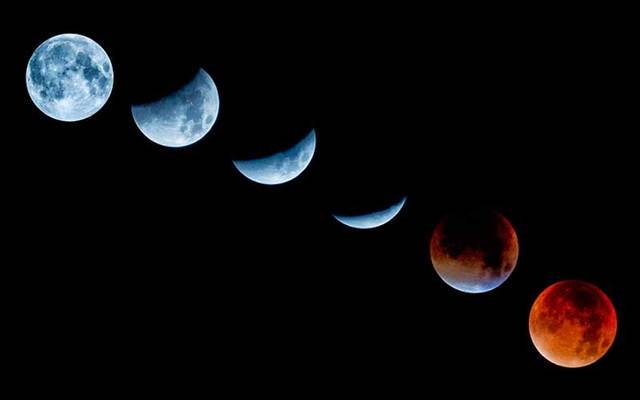A partial lunar eclipse will take place between Nov 18th and 19th, when the moon slips into the Earth's shadow for 3 hours and 28 minutes. The late November moon is also known as the "frost moon."
Between 2001 and 2100, there will be 228 lunar eclipses this century. Most years there will be two eclipses while some years there maybe three or four.
In May 2021 the world saw a total eclipse. Most eclipses last less than two hours, so the 3 hours, 28 minutes, and 23 seconds the moon will be in partial eclipse far surpasses others. For example in 2018, a total lunar eclipse occurred lasting 1 hour, 42 minutes and 57 seconds.
The Nov 18 eclipse will also be the longest partial lunar eclipse in 580 years, according to the Holcomb Observatory at Butler University, Indiana.
Read more
Where to watch?
NASA has forecast that the partial eclipse of the full moon will last around 3 hours, 28 minutes and 23 seconds, beginning at approximately 7:19am GMT, reaching its maximum around 9am GMT and ending at 10:47am GMT.
They say weather permitting, "a huge swath of the planet" will be able to see the eclipse. This includes North and South America, Eastern Asia, Australia and the Pacific region. It can occur earlier or later, depending on your time zone.
On the US east coast observers will begin to see it after 2am. It will reach maximum visibility at 4am. West coast observers can start to see it just after 11 pm with a maximum at 1am, according to NASA.
The Royal Observatory Greenwich, in London, reports "People in the UK will not be able to see every part of the eclipse but will still be able to see the lunar eclipse at totality when the moon turns red."
What is a lunar eclipse?
Total lunar eclipses occur when the moon traverses Earth's shadow and the entire moon is covered. Partial lunar eclipses occur when the moon does not pass completely into Earth's shadow. In the case of a partial eclipse, only most of the sun’s light is covered by the earth and this results in a dark, rusty red moon.
This reddening of the moon happens when light from the sun, despite being directly blocked by Earth’s shadow, bends around our planet and travels through our atmosphere to reach the moon.
Earth’s atmosphere filters out shorter, bluer wavelengths of light and allows only the red and orange wavelengths through, making the moon appear red.
Here are some skywatching tips for Nov 2021, from NASA:




Comments